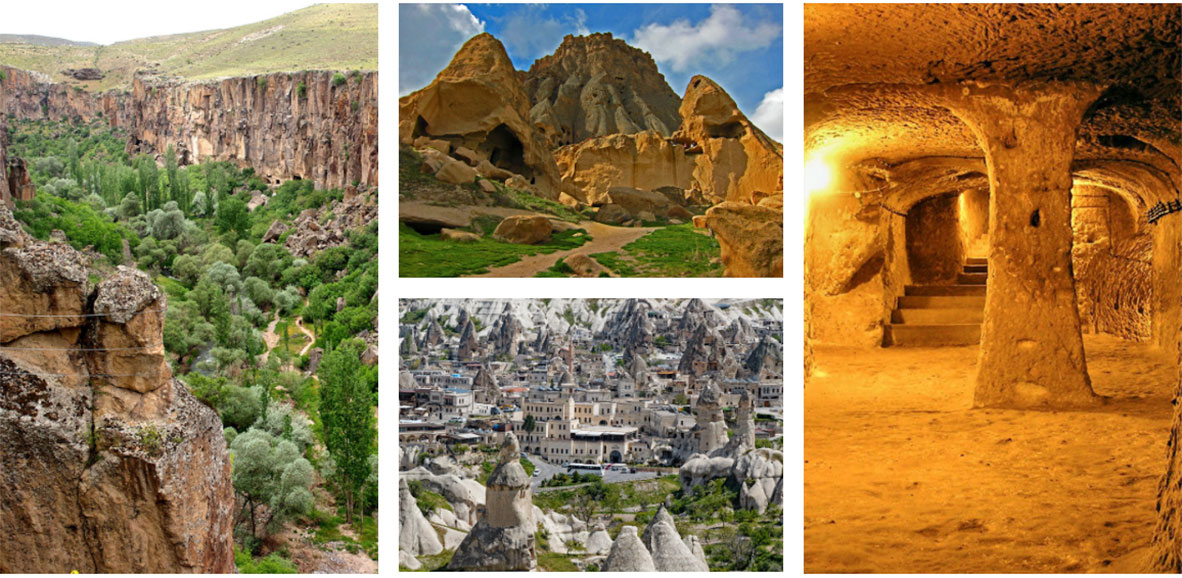The common name for the region covered by the provinces of Aksaray, Nevsehir, Nigde, Kayseri and Kirsehir in central Anatolia is Cappadocia (which is one-of-a-kind in the world and a natural wonder). Volcanoes erupted ash over Central Turkey about 60 million years ago.
As the lava cooled, it became rock, known as tuff. It was tens of meters thick when it solidified. Wind and water carved the tuff over millions of years into odd forms including spires, cones, and even a camel. A different force has been at work on these rocks lately.
People made this place their home, hollowing out the rocks and carving windows, doors, and curving stairwells. Locals even carved churches into the rock. Underground cities are among the features of Cappadocia. It is understood that the region contains more than a hundred underground villages, but many of them are not open to the public.
Goreme National Park and the Rock Sites of Cappadocia were added to the UNESCO World Heritage List in 1985 for natural and cultural reasons. This rocky terrain is honeycombed with subterranean town networks and exceptional examples of Byzantine art.



Comment (0)